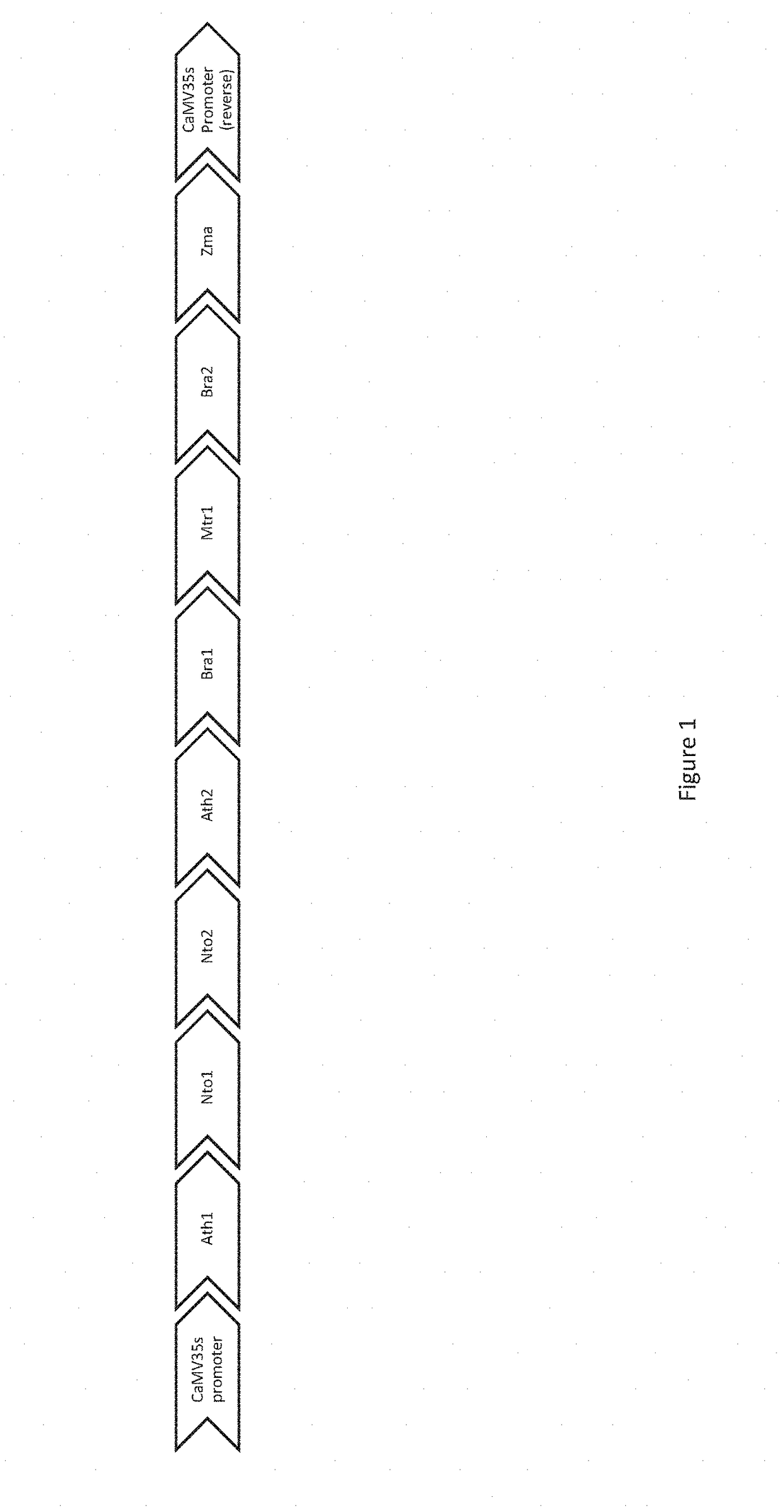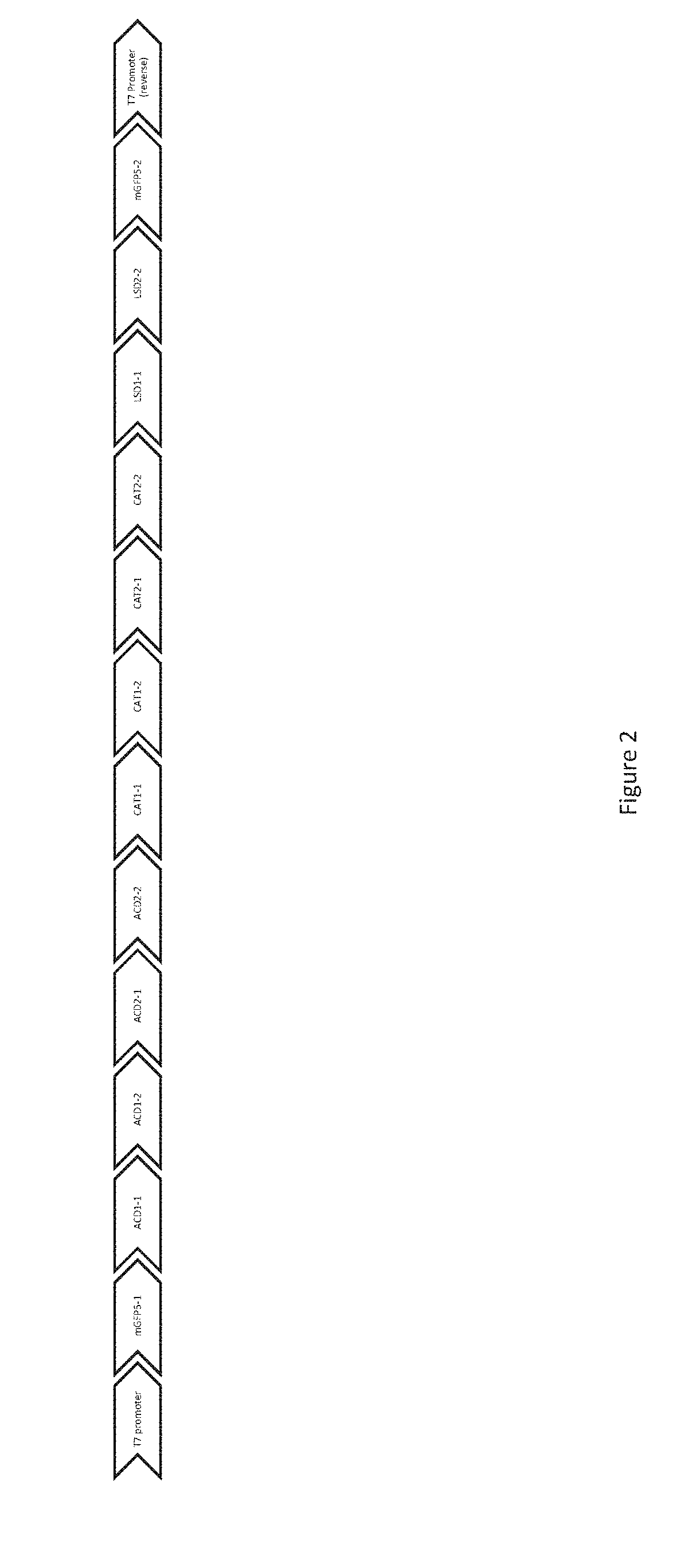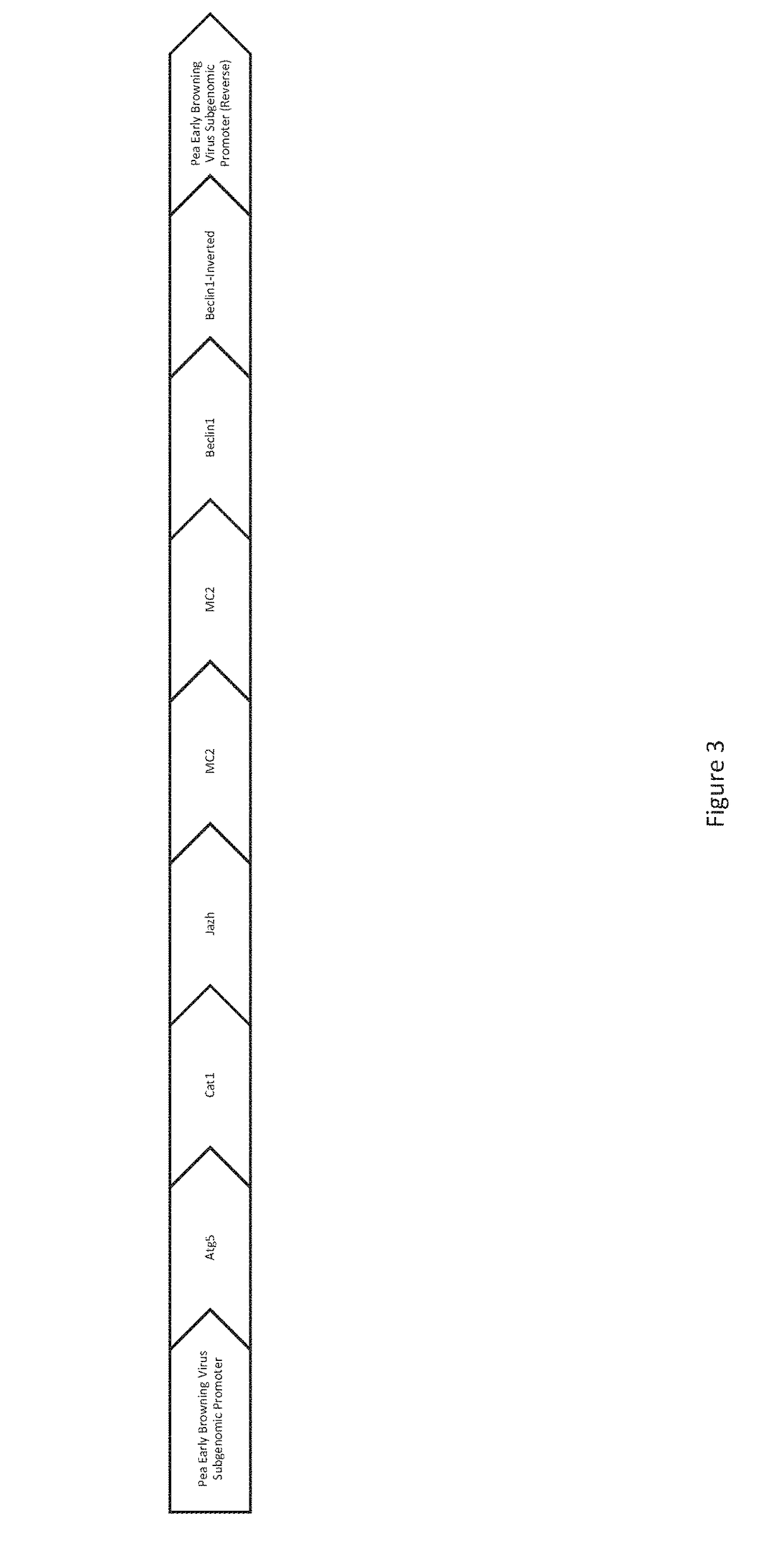Formulations and methods for control of weedy species
a technology of weedy species and formulations, applied in the field of formulations and methods for controlling the growth of plant species, can solve the problems of direct economic losses in sectors, unreachable, negative consequences for human health, etc., and achieve the effects of killing, weakening or impairing the growth of weedy species, reducing, inhibiting or impairing one or more of growth and development of the host plan
- Summary
- Abstract
- Description
- Claims
- Application Information
AI Technical Summary
Benefits of technology
Problems solved by technology
Method used
Image
Examples
example 1
[0238]SEQ ID NO: 3 will be used to treat Medicago truncatula seeds by imbibition. This sequence targets the gene for the CHLI subunit of magnesium chelatase (SULFUR gene). Seeds will be imbibed in a solution containing SEQ ID NO: 3 and siRNA targeting AG06. The results will show that the seedlings, and more specifically, the cotyledons will be chlorotic in comparison to the controls.
example 2
[0239]SEQ ID NO: 1 will be used to treat Arabidopsis thaliana plants, by abrading the leaves and delivering a solution of SEQ ID NO: 1, a surfactant, and siRNA targeting AG06. This sequence targets the Actin 2 gene. The results will show that the leaves senesce more rapidly than those of the controls.
example 3
[0240]SEQ ID NO: 1 will be used to treat Arabidopsis thaliana plants, by abrading the leaves and applying a solution of SEQ ID NO: 1 and a surfactant. This sequence targets the Actin 2 gene. The results will show that the leaves senesce more rapidly than those of the controls.
PUM
| Property | Measurement | Unit |
|---|---|---|
| resistance | aaaaa | aaaaa |
| chemical herbicides | aaaaa | aaaaa |
| insect pest resistance | aaaaa | aaaaa |
Abstract
Description
Claims
Application Information
 Login to View More
Login to View More - R&D
- Intellectual Property
- Life Sciences
- Materials
- Tech Scout
- Unparalleled Data Quality
- Higher Quality Content
- 60% Fewer Hallucinations
Browse by: Latest US Patents, China's latest patents, Technical Efficacy Thesaurus, Application Domain, Technology Topic, Popular Technical Reports.
© 2025 PatSnap. All rights reserved.Legal|Privacy policy|Modern Slavery Act Transparency Statement|Sitemap|About US| Contact US: help@patsnap.com



